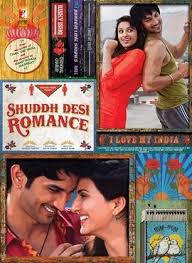Sometimes, even ogres get tired of happily ever after. Shrek Forever After, the fourth installment in the Shrek franchise, brings back beloved characters like Shrek, voiced by Mike Myers, Donkey (Eddie Murphy), and Fiona (Cameron Diaz). Released in 2010, this film steps away from the fairy tale’s typical storyline and dives into the fantasy of Far Far Away, mixing elements of adventure, comedy, and a little bit of darkness as it explores the complexities of identity and happiness. It’s an animated family movie, but with deeper themes that reflect midlife crises and self-discovery.
The story begins with Shrek, now a father to three ogre babies, living a mundane life as a local celebrity. His once-exciting life of adventure is now bogged down by routine, and Shrek finds himself longing for the days when he was feared by villagers and free from responsibilities. This dissatisfaction leads him to make a deal with the conniving Rumpelstiltskin, who tricks Shrek into signing away a day of his life in exchange for a chance to be a “real ogre” again. However, Shrek soon finds himself in an alternate reality where he never rescued Fiona, Rumpelstiltskin rules Far Far Away, and his friends no longer recognize him. The plot revolves around Shrek trying to undo this mistake and win Fiona back before it’s too late.
One of the standout aspects of this film is its exploration of Shrek’s character. Mike does a commendable job of portraying Shrek’s midlife crisis, giving the character more depth than in previous films. This time around, Shrek’s gruffness is tinged with vulnerability and frustration. His journey is less about external villains and more about battling his own dissatisfaction with life. The alternate version of Shrek allows Mike to flex his voice acting range, balancing moments of comedy with sincere emotional beats as the character reflects on what truly matters. The emotional weight of Shrek’s realization—that he already had everything he ever wanted—is one of the film’s strengths, giving it a reflective, even mature tone compared to its predecessors.
The direction by Mike Mitchell brings a fresh approach to the series, offering a darker, more twisted version of Far Far Away. The alternate universe concept is executed well, providing a glimpse into how life would be if Shrek never existed. The filmmakers cleverly reimagine familiar characters: Donkey is now a downtrodden servant, Fiona is a hardened warrior leading an ogre resistance, and Puss in Boots is an overweight, pampered house cat. The alternate versions of these characters add humor and intrigue, while also allowing the film to address themes of fate and personal choice. Mitchell maintains a fast-paced narrative that balances humor, action, and heart, ensuring the film remains engaging even as it delves into deeper themes.
Visually, Shrek Forever After continues the high standard of animation expected from DreamWorks. The alternate world of Far Far Away is designed with a more muted, somber color palette, reflecting the dystopian rule of Rumpelstiltskin. The contrast between the vibrancy of Shrek’s original life and the darker tones of the alternate reality helps to emphasize the stakes of his journey. The special effects are impressive, particularly during the action sequences involving the ogre resistance and Rumpelstiltskin’s magical tricks. The 3D effects are also well-executed, adding depth to the film without feeling gimmicky.
The film’s music, composed by Harry Gregson-Williams, provides a fitting backdrop to the action and emotional beats. While the soundtrack doesn’t quite hit the iconic highs of the first Shrek movie, it still complements the tone of the film well. The music during key scenes, particularly when Shrek begins to realize the importance of his family, helps to heighten the emotional impact without overpowering the visuals.
Another key strength is the script’s balance of humor and heart. While Shrek Forever After has plenty of laugh-out-loud moments, particularly from Donkey and Puss, the humor is more subdued compared to the earlier films. This allows for a more introspective narrative, where the comedy serves the story rather than overshadowing it. The interactions between Shrek and alternate-reality Fiona are particularly touching, as they work to rekindle a bond that has been erased in this twisted timeline. Their chemistry is palpable, and it’s satisfying to see Fiona portrayed as a strong, independent leader rather than the damsel in distress of earlier films.
Overall, Shrek Forever After successfully wraps up Shrek’s story arc with a thoughtful exploration of what it means to be content. While the film doesn’t quite reach the comedic heights of the original Shrek, it offers a more mature, emotionally resonant conclusion to the series. Fans of the franchise will appreciate the return of beloved characters, while the film’s message about appreciating what you have will resonate with audiences of all ages. If you’re looking for a final chapter that combines humor, action, and heart, this movie is worth watching, offering a bittersweet but satisfying end to Shrek’s adventures.







